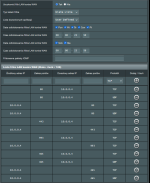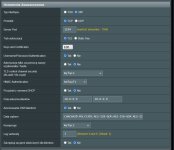Hello, my daughter is unfortunately addicted to the internet. Currently, if not controlled, he can play games for 10 hours a day or more. I'm trying to get her into therapy, but now I'd like to block her access to games and only allow access to the web and e-mail. If she wants to play, I will disable her firewall, e.g. for a maximum of 2 hours. She needs to have access to the internet because addiction has destroyed traditional school and now we have enrolled her in a cloud school so she can pass this school year. Can someone please check if the table below is correct. I would like everything to be blocked and only access to "www" and e-mail. In general, the "www" pages work, but sometimes there are some problems. Similarly with mail, the mail client synchronizes messages without any problems, but does not send them, even though the port is in the firewall.
Attached are screenshot of the firewall I used.
Is it possible to set the settings so that the firewall is turned off, for example, from 14 to 16. My daughter could play for 2 hours. Then the firewall turned back on at 4:00 pm.
Attached are screenshot of the firewall I used.
Is it possible to set the settings so that the firewall is turned off, for example, from 14 to 16. My daughter could play for 2 hours. Then the firewall turned back on at 4:00 pm.




